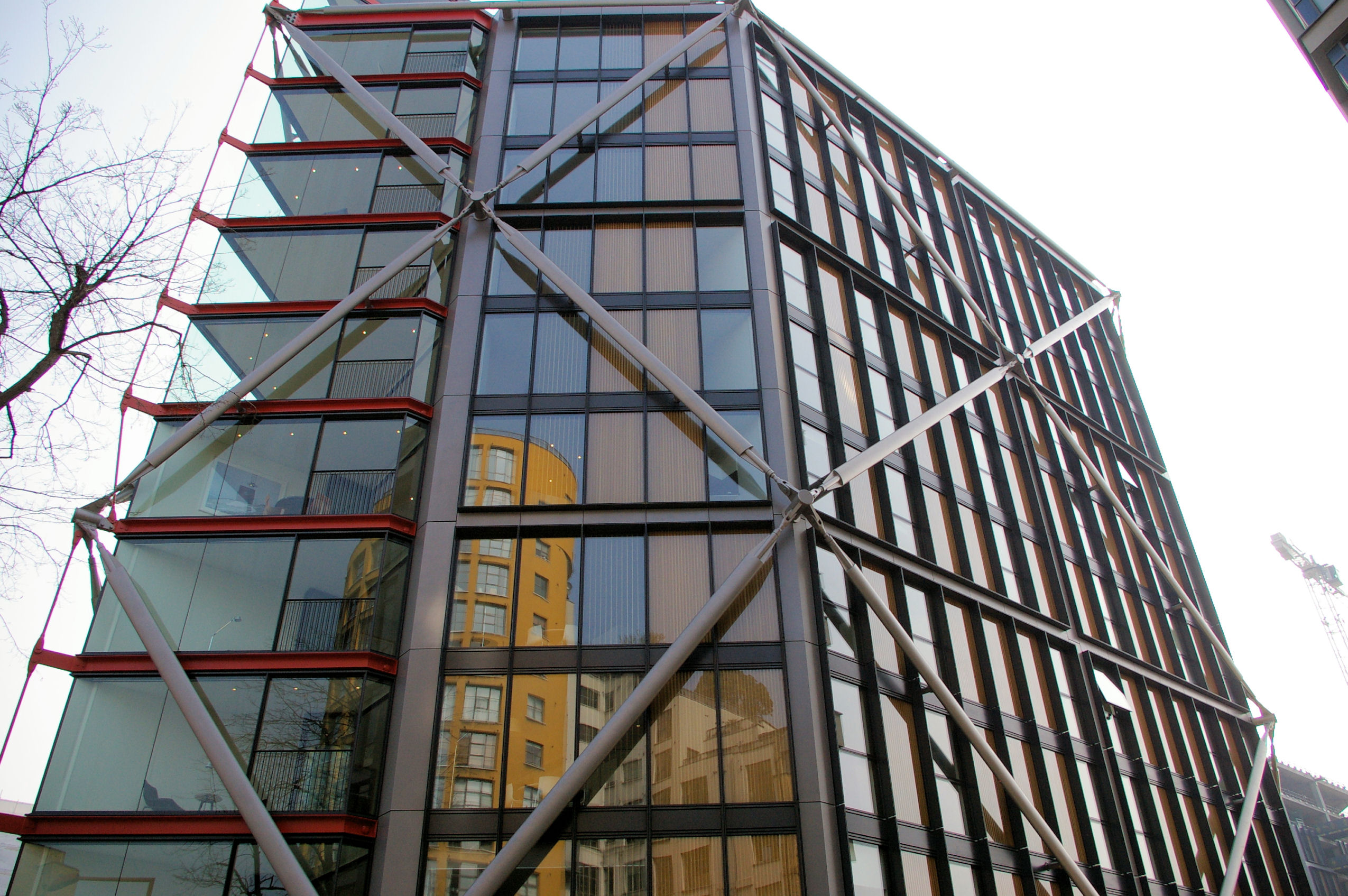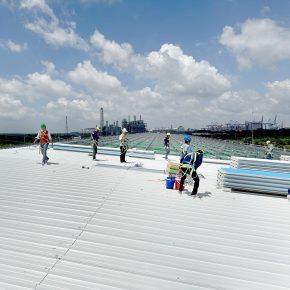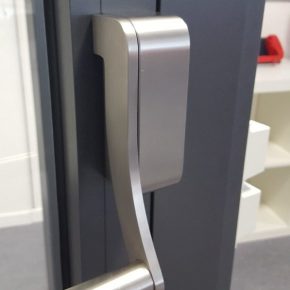
Schöck Isokorb meets structural challenges at NEO Bankside
Schöck meets structural challenges at NEO Bankside
NEO Bankside development of luxury apartments, penthouses and retail units,
Southwark has experienced significant regeneration in recent decades, with Bankside in particular home to such iconic developments as the Tate Modern, Shakespeares Globe and the Millennium Bridge. Now there is a new neighbour on the block, NEO Bankside. This stunning 1.5 acre development of luxury apartments, penthouses and retail units, will provide 229 residential units in five separate buildings that range from six to 24 storeys.
The apartments vary in size from studios and one-bedroom to four-bedroom units, with larger duplex unit penthouses. These are designed as independent pavilion structures and double-height living areas are made possible by the sloping roof plane. Winter gardens are an additional feature, creating a prow effect at the north and south end of each building.
Waterman provided structural engineering and environmental consultancy on the project, which has been designed by project architect, Rogers Stirk Harbour Partners (RSHP). On this occasion it was Waterman who developed the structural system and final geometry, which comprises external stability bracing arranged on a six-storey staggered dia-grid. Each building comprises a concrete frame of columns and flat slabs, but the frames are stabilised to resist lateral forces by a perimeter bracing system positioned just out-board of the cladding. For aesthetics, individual bracing members are steel oval-hollow sections, which actually provide greater structural efficiency under certain critical loading conditions. The bracing has a dual function, not only resisting lateral building loads but also supporting the triangular winter-gardens via a series of apex nodes.
Protection against thermal bridging
Schöck Isokorb help meet structural challenges at NEO Bankside in London
The entire construction presented significant structural challenges and this extended to the serious demands made on the requirement for protection against thermal bridging. This is where Schöck played a major part with its Isokorb thermal break modules. The modules offer outstanding thermal insulation properties and dramatically reduce thermal energy loss in connective areas by guaranteeing the homogeneity of the thermal envelope between cantilever structures and the internal slab. They also transfer load and maintain full structural integrity, while at the same time enabling inner surface area temperatures to remain well in excess of those likely to cause mould formation and condensation.
Schöck Isokorb range of modules
In addition to their exceptional thermal performance ratings, the Schöck Isokorb range of modules are the only products of their type to allow connectivity between concrete-to-concrete, concrete-to-steel and steel-to-steel and also provide BBA Certification and LABC Registration.
Meeting the structural challenges
For the NEO Bankside project, various configurations of the type K Isokorb, for concrete-to-concrete construction were incorporated, plus the type KST. This is usually a steel-to-steel connection, but has been adapted on this occasion for concrete-to-steel connectivity. The two main structural challenges involved the winter gardens and the level above, the penthouse mezzanine winter gardens.
The winter gardens are triangular spaces between the columns and the hangers, which support the points at both ends of the building. These are essentially outside spaces, so the slab requires a thermal break between the winter gardens and the main slab. Also, the hangers are not fire protected, so in the event of a fire, the winter garden slabs will need to safely cantilever from the rest of the building. This meant the Schöck technical team had to resolve two load cases. In the first instance, where the winter gardens are supported by the hangers, this was relatively simple as only shear forces are involved and the standard type Q Isokorb meets this requirement.
Structurally more challenging was the second load case. Should a fire destroy the hangers, and as a consequence turn the winter garden slabs into cantilevers, then a high bending moment as well as shear force would result. To meet this challenge Schöck designed and supplied bespoke thermal break connectors with a moment capacity of up to 200kNm/m. It was also clear that the fire strategy would require the Isokorbs to provide two hour fire protection and to achieve this Schöck incorporated the patented HPC thrust bearing block into the units.
The penthouse mezzanine winter gardens, which sit at the next level up, are steel structures with beams connected to the reinforced concrete slab. Conventionally the Schöck Isokorb type KS, for concrete-to-steel, would be used in this situation, but the high forces acting at the connection meant that an adapted KST (for steel-to-steel connectivity) was the chosen solution. This involved the KST units being bolted to an end plate and then cast into the concrete.
Complete peace of mind for designers and engineers
Schöck Isokorb modules offer designers and engineers complete peace of mind, as all units meet full compliance with the relevant UK building regulations. The requirement described in BRE IP1/06 a document cited in Building Regulations Approved Documents Part L1 and L2 and Section 6 in Scotland that the temperature factor used to indicate condensation risk (fRSI) must be greater than, or equal, to 0.75 for dwellings and residential buildings, is easily met by incorporating the Isokorb.
There is also compliance with the Government Standard Assessment Procedure, SAP 2012, concerning CO2 emissions from buildings, and respectively heat losses through non-repeating thermal bridges. Here, the lambda values of the Schöck Isokorb enables energy loss through balconies, canopies and other cantilever parts of buildings to be reduced by as much as 84% to 91%.
Schock
The Clock Tower
2-4 High Street
Kidlington
OX5 2DH
UK
Phone
0845 241 3390
Fax
0845 241 3391
Visit Supplier's page
Latest news

15th April 2024
EJOT Colorfast chosen for Kingspan’s highly sustainable new Asian factory
More than 120,000 EJOT Colorfast self-drilling fasteners have helped Kingspan to create a thermally superior, visually-appealing building envelope for its first purpose-built manufacturing plant in South East Asia.
Posted in Articles, Building Industry News, Building Products & Structures, Building Systems, Case Studies, Posts, Restoration & Refurbishment, Retrofit & Renovation, Roofs, Sustainability & Energy Efficiency
15th April 2024
ASSA ABLOY helps new manufacturing plant achieve LEED Gold certification
Improving sustainability performance is becoming a higher priority for building developers, owners and users. One consequence is fast-growing demand for green building certifications — and therefore specification. Specialist input can make the difference between hitting and missing a project target, as ASSA ABLOY explains here…
Posted in Access Control & Door Entry Systems, Architectural Ironmongery, Articles, BIM, Infrastructure & CAD Software, Building Industry News, Building Products & Structures, Building Regulations & Accreditations, Building Services, Case Studies, Doors, Facility Management & Building Services, Information Technology, Retrofit & Renovation, Security and Fire Protection, Sustainability & Energy Efficiency
12th April 2024
Strand Hardware: D-Fine Makes a Splash for Seaside Safety
Strand Hardware’s D-Fine range is designed to withstand the harsh conditions prevalent in coastal environments. It is made from 316 stainless steel.
Posted in Access Control & Door Entry Systems, Architectural Ironmongery, Articles, Building Industry News, Building Products & Structures, Building Services, Doors, Facility Management & Building Services, Health & Safety, Innovations & New Products, Restoration & Refurbishment, Retrofit & Renovation, Security and Fire Protection
12th April 2024
GEZE UK – accredited as a Living Wage company
GEZE UK is delighted to announce that the company has been accredited as a Living Wage Employer. The real Living Wage is the only UK wage rate based on the cost of living.
Posted in Access Control & Door Entry Systems, Architectural Ironmongery, Articles, Building Industry News, Building Products & Structures, Building Services, Doors, Facility Management & Building Services, news, Security and Fire Protection
 Sign up:
Sign up: